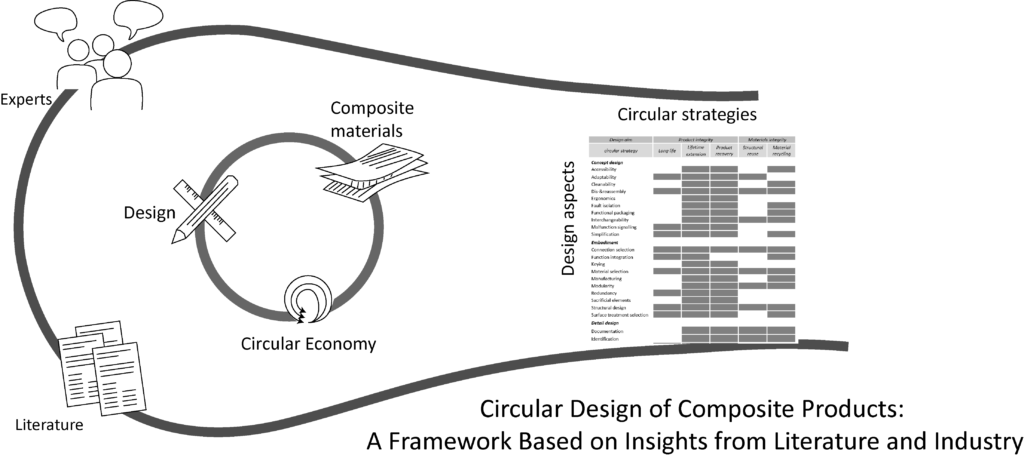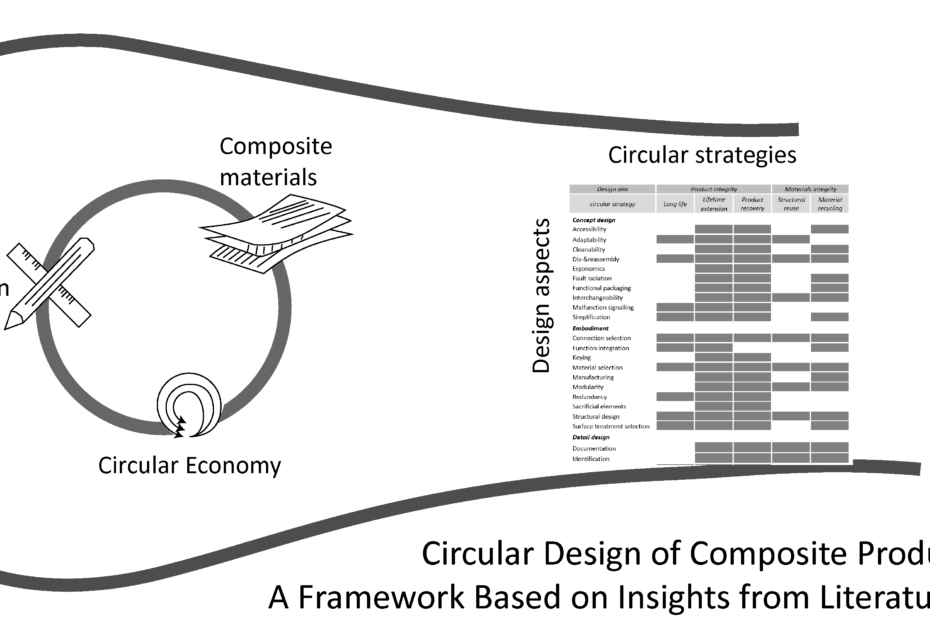Circular Design of Composite Products: A Framework Based on Insights from Literature and Industry
Composite materials are an attractive material choice as they enable lightweight, low-maintenance products with a long lifespan. Recycling these materials, however, remains a challenge. Homogeneous material composition and the use of thermoset matrices complicate reprocessing, and result in low-grade recyclate. This means that closing the loop for these materials in a circular economy remains challenging, especially for glass fibre-reinforced thermoset composites. For a circular economy, products need to be designed to preserve product functionality, material properties, and economic value for as long as possible. However, recovery strategies, design aspects and their interconnectedness are currently largely unexplored for products containing fibre-reinforced polymers.

The aim of this study was to identify circular strategies and determine design aspects for products containing composites. To achieve this, we conducted a systematic literature review and consulted experts. The circular strategies are largely similar to generic circular economy strategies as far as product integrity is concerned. However, on a material level, we identified additional approaches, the most notable of which is structural reuse, which preserves the material quality and thereby value. The design aspects were clustered and positioned along the product design process to support implementation. Finally, the strategies and design aspects we identified were brought together in a framework to support product design and design research for products containing composite materials in the context of a circular economy.
The full article is published open access in Sustainability
